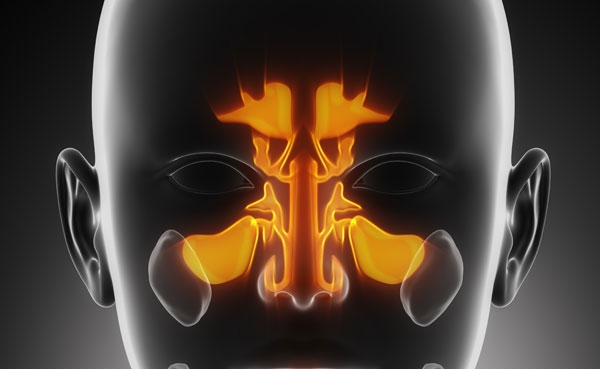Sinus is an air-filled cavity located behind cheeks, eyes and forehead in the cranial (skull) bones. A mucus membrane lines the sinus. The membrane has cells with very fine hairs, ciliated epithelium that pushes out the mucus from the cavity, enabling circulation of the air. The mucus traps pollutants, including dirt particles, found in the air that is inhaled. A healthy sinus is free from germs, including bacteria. Each cavity features an ostium, a channel opening into the nasal passages for easy exchange of mucus and air. The sinus grows into a walnut-size pocket from a pea-size space.
Types of Sinus
These cavities are found in pairs and also called “paranasal sinuses”. Ostia, a thin channel, connects the sinuses to the throat and nose. All sinuses are interconnected. Human skull features four pairs of sinuses: ethmoid, frontal, maxillary and sphenoid. The sinuses are named after the four skull bones in which they are located. The bones are referred to as the ethmoid, the frontal, the maxilla and the sphenoid.
The pyramidal ethmoid sinuses lie between the eyes, behind the nose bridge and at the nose root. All newborn babies have clearly demarked ethmoid that grows with age. The sinus cavities above the eyes in forehead are called frontal sinuses. The maxillary sinuses in cheekbones are located on the side of nostrils. The maxillary cavity, the largest sinus, develops before other sinuses. The cavity, generally filled with fluid at the time of birth, grows in two phases: up to three years of age and between seven and twelve years of age. The maxillary sinus resembles a pyramid in an adult. The sphenoid sinuses, situated behind the eyes and the ethmoid sinuses, are found deep in the skull. These cavities reach their full-size during adolescence. The ethmoid and maxillary sinuses are a birth feature whereas funnel shaped frontal develops at the age of five.
Functions of Sinuses
- Sinuses reduce skull weight, particularly weight of the facial bones. So, if the cavities are blocked, the head becomes heavy and drowsiness and tiredness occur during sinusitis.
- Sinuses add resonance to the voice.
- Sinuses warm, moisten and filter the air that we inhale and remove redundant air particles.
- Sinuses produce mucus that protects against microbiologic organisms, pollutants, dirt and dust.
- Sinuses may facilitate pressure damping and air conditioning.
- Sinuses increase the olfactory area.
- Sinuses insulate eyes, dental roots and other sensitive structures against quick temperature changes in the nasal cavity.







